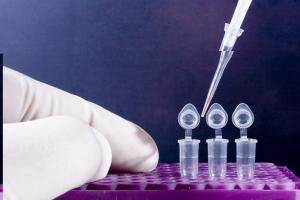Forensic Analysis: Mugs, hair and other samples
From Bones to CSI, these TV series have fed our curiosity and interest in forensic science. We are absorbed and intrigued by how criminal investigations get solved, the science, rationale and the workings of great minds to solve these puzzling murders.
These TV series regularly show forensic experts searching crime scenes, inch by inch, deeply absorbed into their task of trying to pick up that tiny piece of forensic evidence that could be key to solving the crime in question. Here is some interesting information you might enjoy reading about various samples and how they are collected.

The omnipresent hair
The single hair always elicits a sigh of relief. We seem to believe that hairs provide incontrovertible evidence in court, the DNA profile extraction is always successful with such a sample. But hairs are actually a very particular sample because they do not always contain the right DNA. We have two types of DNA in our body:
- Nuclear DNA: this type of DNA is found in every type of cell in our body, except red blood cells. Nuclear DNA is enclosed in our cell nucleus and contains the vast bulk of genetic information. Each cell has one copy of nuclear DNA.
- Mitochondrial DNA: this type of DNA is found in a different part of the cell, specifically the cell mitochondria. These are specialize cell organelles which provide energy for the cell to function. There are thousands of copies of mitochondrial DNA in every cell.
So let’s analyze a human hair: a hair is made up of two basic parts, the root and the part which emerges from the root known as the shaft. The root contains nuclear DNA but the shaft contains only mitochondrial DNA. Our body naturally sheds hair and we of course also cut our hair – but these hairs have no nuclear DNA in them. To be able to accurately link DNA found at the crime scene with a specific person we must have samples of nuclear DNA. In other words, for a hair DNA test to be viable, we need the hair to have the root or follicle attached.
Is Mitochondrial DNA useless?
Mitochondrial DNA has a very particular hereditary pattern: it is passed on from a mother to her children, be they male or female but is never passed on by males. People with a common maternal line (perhaps with the same mother) will also share the same mitochondrial DNA profile. However, because people with the same maternal line will have exactly the same MtDNA profile, the profile does not become a good distinguishing factor between people.
Stamps and Licked envelopes
Licked envelopes and stamps provide quite a challenge when it comes to successful extraction of DNA profiles. There are a number of reasons for this:
First and foremost the adhesive glue on the adhesive strip causes any DNA to degrade. Moreover, it is hard to know whether the person actually licked the stamp or envelope. Often, people use a wet finger to lubricate the adhesive part or a damp cloth or glue. This clearly means that there would actually be no DNA at all. Moreover, a lick on the back of stamp using the surface of the tongue would at most provide a minute quantity of DNA. The surface of our tongue is not the best place to collect exfoliated mouth cells. In fact, relationship tests, ancestry tests, paternity tests and the bulk of DNA tests available use oral swabs which need to be rubbed under the tongue rather than above it.
Mugs, cups and glasses
Again, these samples can be rather challenging and extraction of a DNA profile might not always be possible. Forensic DNA evidence can be contaminated in a number of ways or absent for a number or reasons. To bear in mind that any cells collected are by contact of the inner lip with the surface of the glass rather than from the outer lip.
- People sometimes share glasses. If the glass was shared, it might be impossible to extract individual DNA profiles.
- People sometimes use straws. The DNA on the tip of a straw would be less than that on the rim of a glass.
- Make up and cosmetics, such as lip stick, may affect the validity of the sample. Certain chemicals in lipstick can degrade any DNA left on the glass.
- Contact with the glass might have been minimal or the person might not even have drank anything.
Of course, forensic scientists use every means available and will attempt to extract DNA even from the most degraded, old and unfeasible samples in the hope of getting a few genetic markers. It is thanks to advances in the methods of DNA amplification and analysis, namely polymerase chain reaction, that many crimes are nowadays solved.
Bio: Karl M McDonald is a free lance writer specializing in the field of genetics and DNA testing. Articles by the author can be found on many blogs and info sites, including the article knowledge base for homeDNAdirect. Karl currently lives in West Sussex, UK with his wife, kids and 2 dogs.
